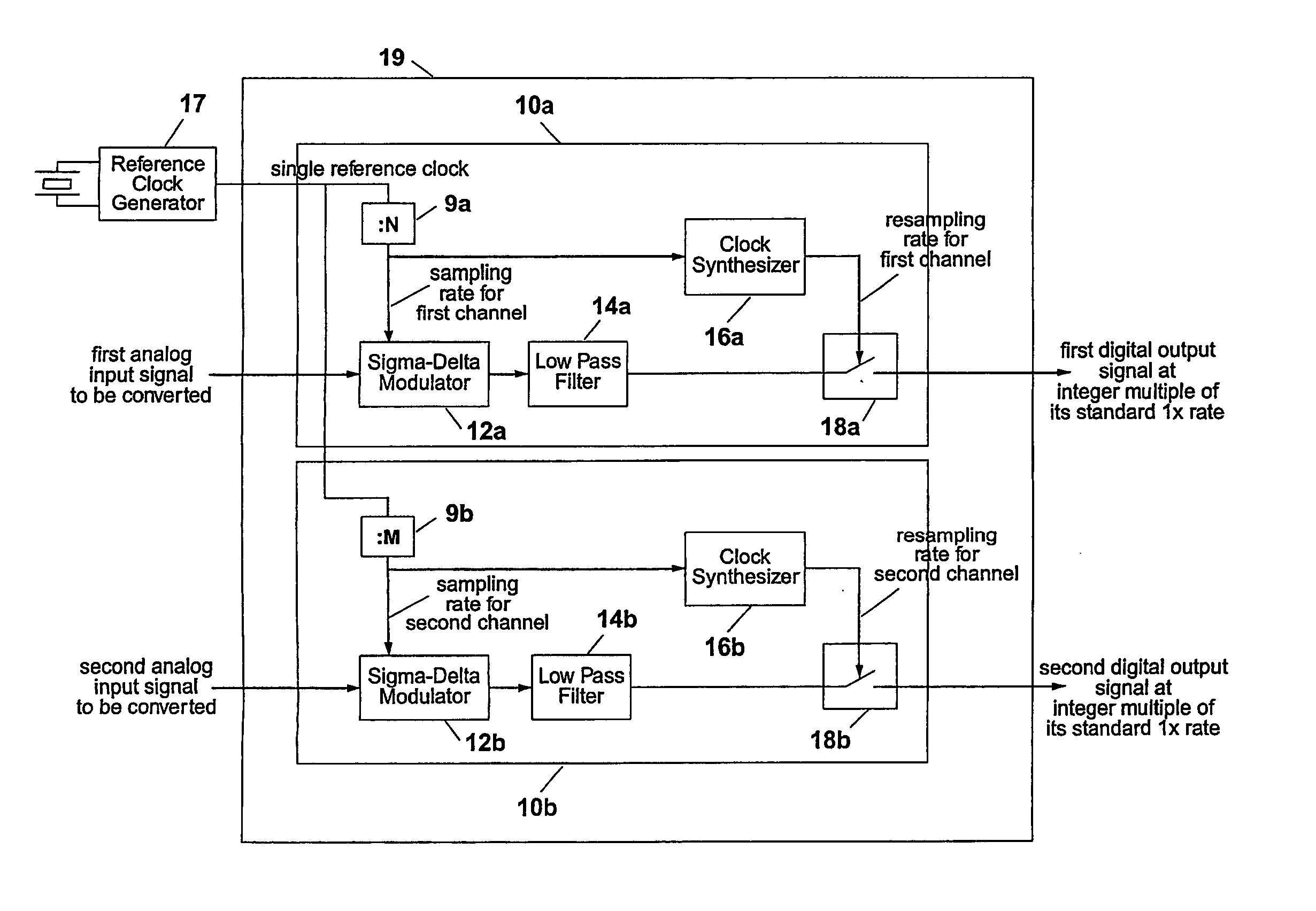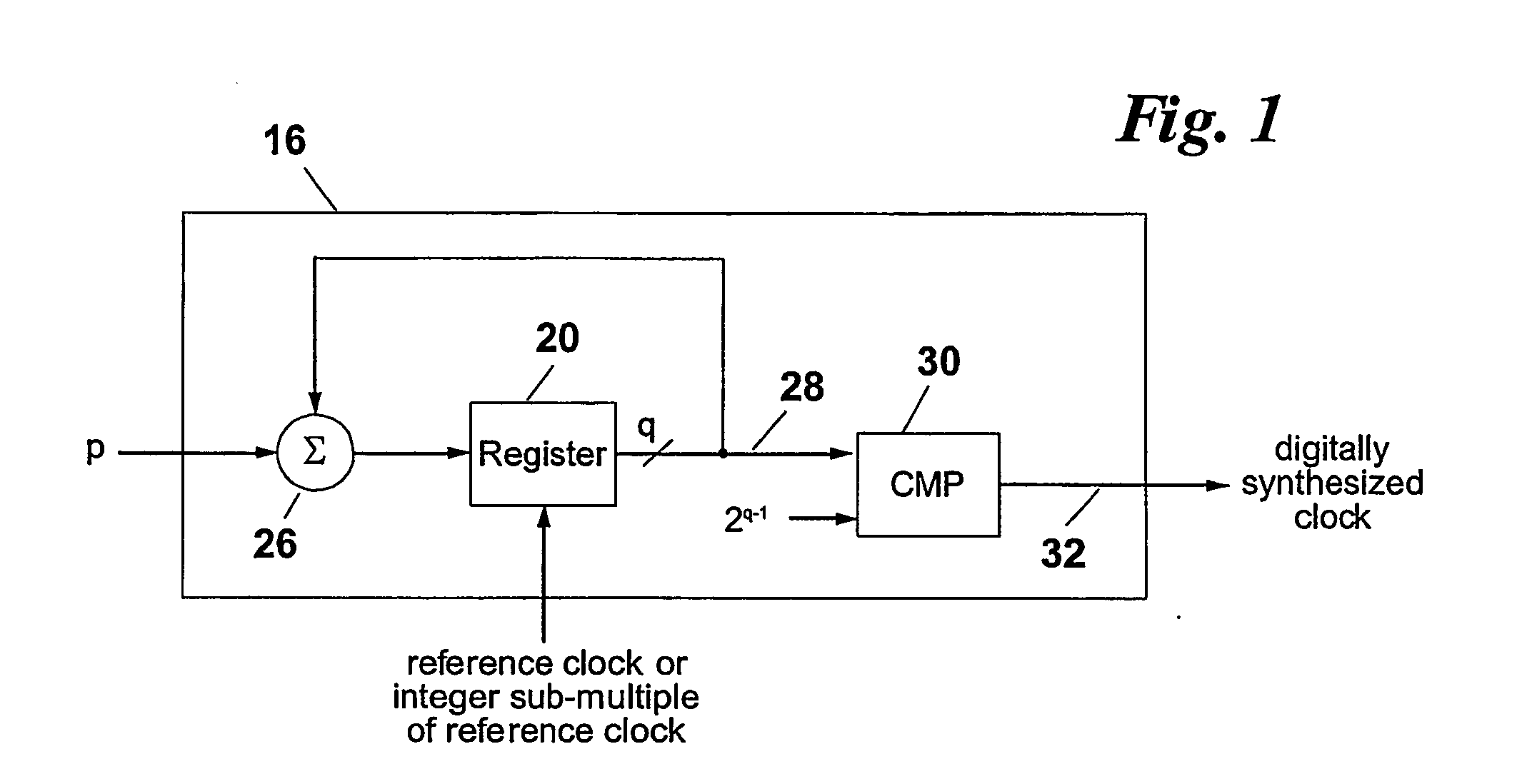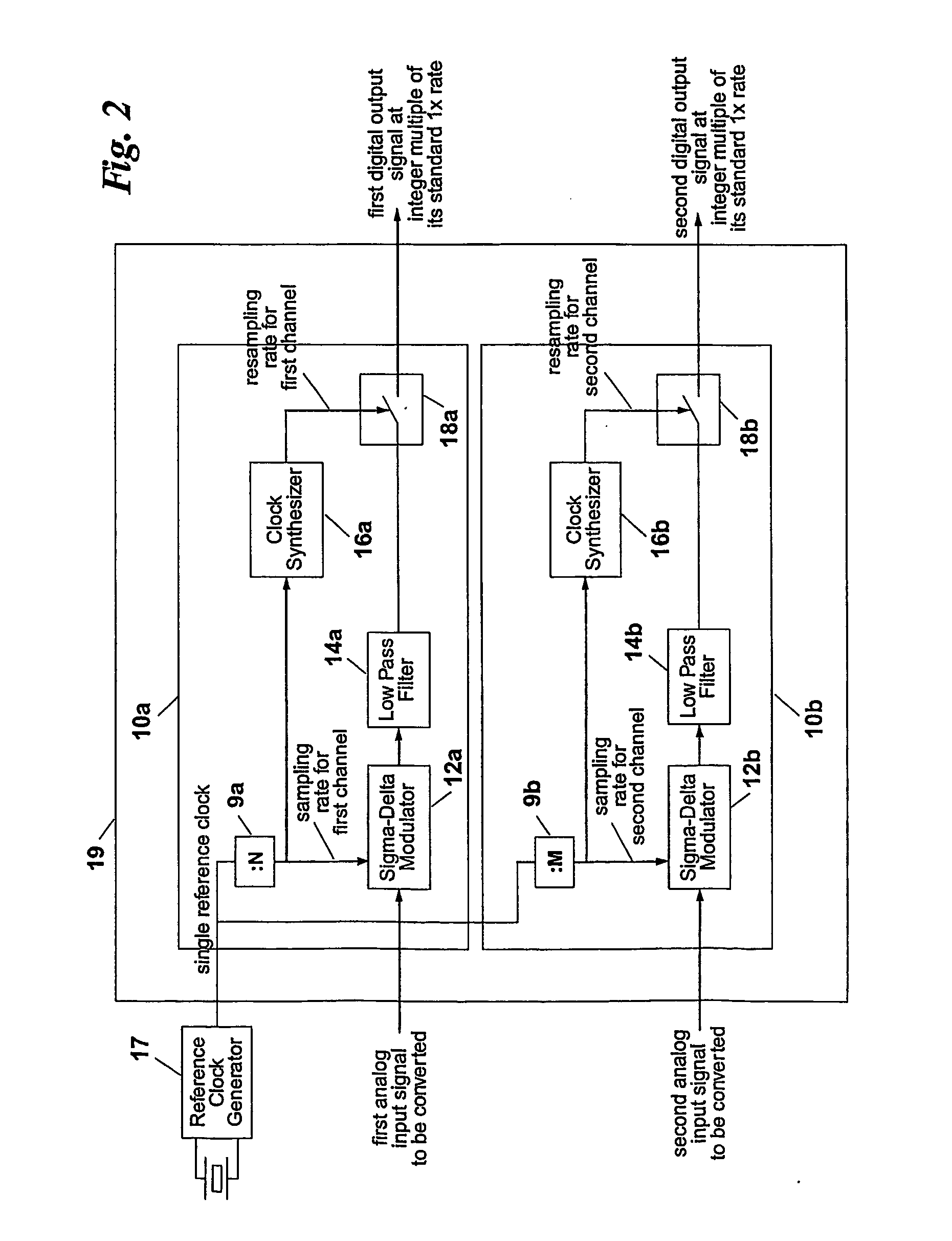Multi-rate analog-to-digital converter
a multi-rate analog-to-digital converter technology, applied in the field of analog-to-digital converters, can solve the problems of increasing the size of the circuit or radio, adding complexity, and affecting the noise floor so as to improve the noise floor level of the multi-rate analog-to-digital converter, improve the noise floor level, and achieve the effect of high degree of generating accuracy
- Summary
- Abstract
- Description
- Claims
- Application Information
AI Technical Summary
Benefits of technology
Problems solved by technology
Method used
Image
Examples
Embodiment Construction
Referring to the Figures, FIG. 1 shows a diagrammatical representation of a Clock Synthesizer 16. The input parameter, p, is selected according to the main clock (not shown) frequency, fref / α, the output frequency to generate, fx, and the number of bits, q, used to accumulate the phase of the output clock signal. A register 20 receives an input from adder 26 and is activated by an input clock which is an integer sub-multiple of the reference clock (not shown). Alternatively the register could be clocked by the reference clock itself. Consequently, the frequency of the clock activating register 20 is given by fref / α, where α is an integer number larger or equal to 1. Register 20 is part of a closed loop also comprising the adder 26. The closed loop accumulates a phase count by means of an increment, p, added to another input of the adder 26. The register 20 presents its output 28 to a Comparator 30. Comparator 30 compares output from register 20 with a value derived from 2q−1. Outpu...
PUM
 Login to View More
Login to View More Abstract
Description
Claims
Application Information
 Login to View More
Login to View More - R&D
- Intellectual Property
- Life Sciences
- Materials
- Tech Scout
- Unparalleled Data Quality
- Higher Quality Content
- 60% Fewer Hallucinations
Browse by: Latest US Patents, China's latest patents, Technical Efficacy Thesaurus, Application Domain, Technology Topic, Popular Technical Reports.
© 2025 PatSnap. All rights reserved.Legal|Privacy policy|Modern Slavery Act Transparency Statement|Sitemap|About US| Contact US: help@patsnap.com



